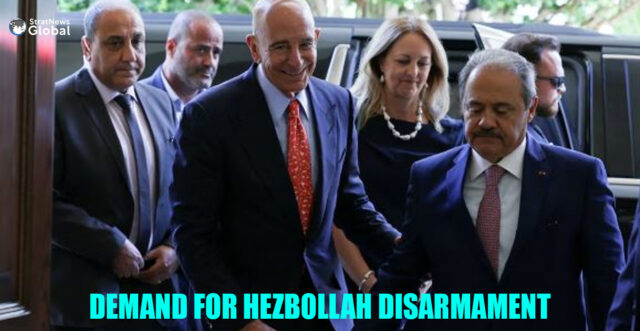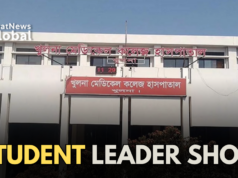Lebanese officials were drafting a reply on Tuesday to U.S. demands that the armed group Hezbollah lay down its weapons nationwide by November, in return for a halt to Israeli military actions, according to two sources familiar with the discussions.
The deadline has turned up the heat on Iran-backed Hezbollah, which was struck hard by Israel during last year’s war, is suffering a financial crunch and faces pressure in Lebanon to disarm.
Washington’s demands were conveyed by Thomas Barrack, U.S. special envoy to Syria and ambassador to Turkey, during a trip to Beirut on June 19.
The sources, speaking on condition of anonymity because of the sensitivity of the matter, said Barrack had shared a written roadmap with Lebanese officials and told them he expected to hear back by July 1 on any proposed amendments.
Disarmament Of Hezbollah
The six-page document centers on the disarmament of Hezbollah and other terrorist groups, and urges Lebanon to improve ties with neighbouring Syria and implement financial reforms, they said.
It proposes a phased approach to disarmament, in which Hezbollah would hand in its arms throughout Lebanon in exchange for the withdrawal of Israeli troops occupying areas in south Lebanon, the sources said.
Barrack said full disarmament should be completed by November or by the end of the year at the latest, they said.
Disarmament would end Israeli strikes targeting Hezbollah members and unlock funds to rebuild parts of Lebanon destroyed by Israeli forces last year, they said.
The U.S. has said Washington will not support reconstruction in Lebanon without Hezbollah laying down arms.
The proposal also refers to establishing a mechanism overseen by the United Nations to secure the release of Hezbollah-linked prisoners by Israel, the sources said.
They said Barrack had urged Lebanese officials to seize the opportunity laid out in the roadmap as it “may not come up again.” He is set to return to Lebanon next week.
Barrack had not yet gotten Israeli approval for the roadmap, the sources said. There was no immediate response from the U.S. state department, Israel’s prime minister’s office or Israel’s foreign ministry.
Initial Response From Lebanon
Lebanon has appointed a committee to formulate a preliminary response, comprised of delegates from the offices of Prime Minister Nawaf Salam, President Joseph Aoun and Parliament Speaker Nabih Berri, a Hezbollah ally, the sources said.
It was not clear whether the initial reply would be ready by Tuesday. The U.S. proposal includes a condition that the final deal be sealed with a unanimous decision by Lebanon’s government, the sources said.
The second source, and a third source briefed on the matter, said Berri was in close communication with Hezbollah to secure the group’s input.
“Hezbollah has not refused to cooperate with the committee and in fact began sending signals of cooperation – but has not committed to disarming,” the third source said.
The prospect of securing Hezbollah’s disarmament – unimaginable two years ago – underlines the big shifts in the Middle East power balance to the detriment of Iran’s allies across the region since the start of the war between Israel and Hezbollah ally Hamas in October 2023.
‘The Right To Say No’
Some of Hezbollah’s arsenal was destroyed by Israeli airstrikes, and other depots in southern Lebanon were handed over to Lebanon’s army in accordance with the U.S.-brokered ceasefire that ended that round of conflict.
That deal called for the disarmament of armed groups across Lebanon. Hezbollah has said it applies only to the group in Lebanon’s southernmost districts.
Hezbollah has not commented publicly on Barrack’s proposal. But in a televised address on Monday, its secretary general, Naim Qassem, reiterated Hezbollah’s resistance to U.S. and Israeli pressure and urged other Lebanese to do the same.
“We have the right to say ‘no’ to them, ‘no’ to America, ‘no’ to Israel,” Qassem said. “We call on you in Lebanon: do not help Israel and America with their plans.”
Qassem said the U.S. and Israel “want to exploit the moment to turn the equation in the entire region in their image.”
(With inputs from Reuters)





